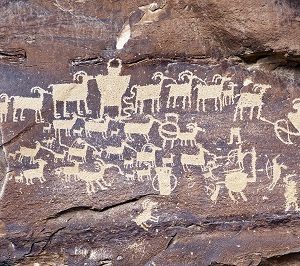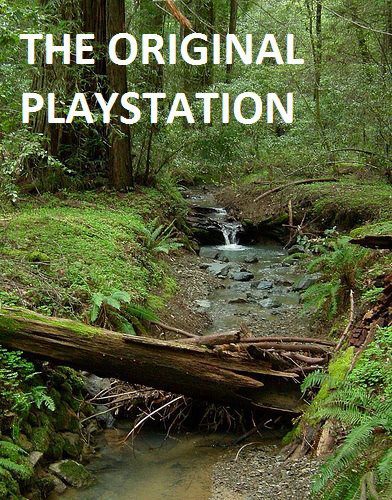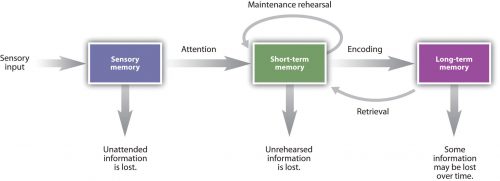Every culture in the world has stories that are part of its history and tradition. Below are some ideas to engage elementary and middle school students in STEM as they learn about history, tradition, and storytelling in the environments in which they live. These enrichments accompany Activity 18— Tale of the Sun found in Project Learning Tree’s PreK-8 Environmental Education Activity Guide. Be sure to check out the full lesson!
Essential Question: Why do people tell stories?
Task: Demonstrate how a story can change through perception and time.
NGSS Connections:
- 4-LS1-2. From Molecules to Organisms: Structures and Processes – Use a model to describe that animals receive different types of information through their senses, process the information in their brain, and respond to the information in different ways
- MS-LS1-8. From Molecules to Organisms: Structures and Processes – Gather and synthesize information that sensory receptors respond to stimuli by sending messages to the brain for immediate behavior or storage as memories.
- MS-ETS1-4. Engineering Design – Develop a model to generate data for iterative testing and modification of a proposed object, tool, or process such that an optimal design can be achieved.
STEM Strategies

Science
Challenge students to research storytelling and why we tell stories. Explain that there are many ways in which cultures and communities tell stories. Invite students to investigate a few different examples and try to retell a common story using a new medium. Some examples might include:
- Oral lure
- Fables; Aesop’s Fables are a great example of the written form of storytelling.
- Puppeteering, plays, and other performances
- Petroglyphs and other rock and cave drawings
- Radio and recorded conversations
- Pictures and poetry
- Letters
In addition to story, science is shared both verbally and in written word. Successful scientists should practice good storytelling.

Technology
As explored above, stories can be shared using words (written and spoken) and through art, song, and dance. Encourage students to use technology to produce a short story about a favorite tree, species, or outdoor place. Use graphic software to create a book jacket, comic strip, or meme for each personal story. Use word processing or voice-to-text application (many are available for free, such as Dragon Dictate) to write it. Finally, apply any available video software to produce a movie or narrated documentary to share stories with family and friends.
Engineering
People learn from stories because telling facts (names, dates, numbers, etc.) in narrative form makes them easier to remember. This short video explains how humans turn what we see and hear into memories and how we store and retrieve those memories. To communicate and demonstrate how complex systems like this work, scientists use models. Challenge students to use modeling clay or other readily available materials to construct either a physical brain OR the various parts of your memory network, as described in the short video clip.

Math
We learn from stories, and sharing stories is built into our human DNA. Imagine that you have written a story and you want to invite everyone to attend a celebration where it will be read for the first time in public. The problem is, you don’t have any way to announce the big event – there is no cell phone service, no internet, no texting, no social media, just the power of the spoken word. You and your best friend will start the process of making sure everyone is verbally invited to the event. The problem is that you and your friend are so busy planning the celebration that you must rely on others to pass the word, and you are running low on time. The word must spread fast and wide. If everyone who is told about the celebration tells another person who doesn’t know about it every 30 minutes, how long will it take for your story to reach everyone in your school?
To begin, you must conduct research to find the number of students in your school. The math you are applying is called a geometric sequence.
Use the data below to calculate the total time it will take for everyone in your school to hear about the Big Celebration.
|
Number of people |
2 (You + friend) |
4 |
8 |
16 |
32 |
64 |
128 |
256 |
512 |
1024 |
|
Time (minutes) |
0 (clock starts here) |
30 |
60 |
90 |
120 |
150 |
180 |
210 |
240 |
270 |
As you can see in the table, the number of people doubles every 30 minutes.
Additional Resources
Don’t have PLT’s PreK-8 Environmental Education Activity Guide?
- Purchase a print guide or e-book, available from PLT.org, Amazon and other places where books are sold.
- Get it through your PLT State Coordinator along with hands-on professional development, alignments to state standards and other state-specific supporting resources.
Don’t consider yourself a formal teacher?
- Check out PLT’s Nature Activities for Families. We have 40+ nature activities for families that can be easily used by parents, grandparents, youth group leaders, nature centers, and other nonformal programs.


